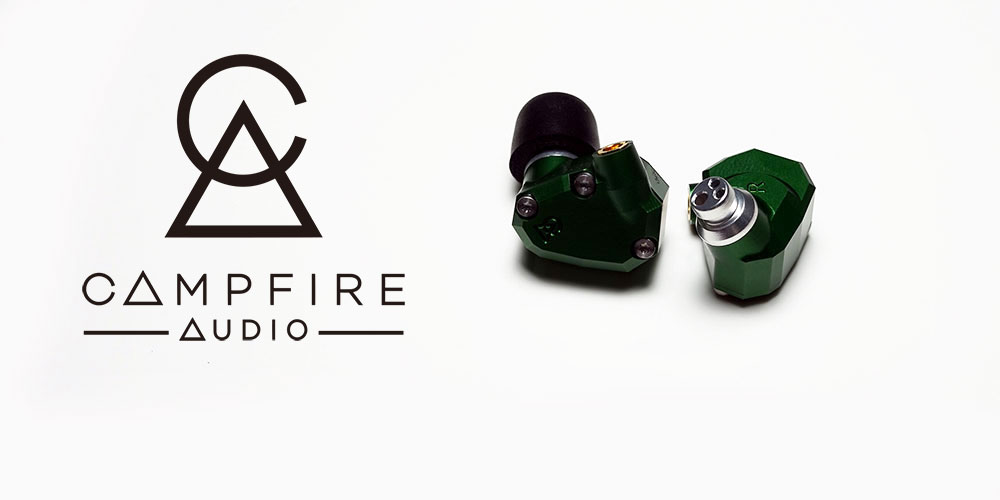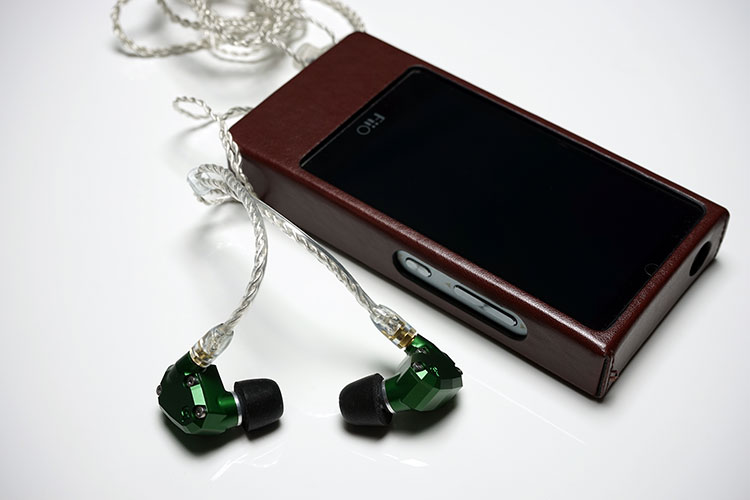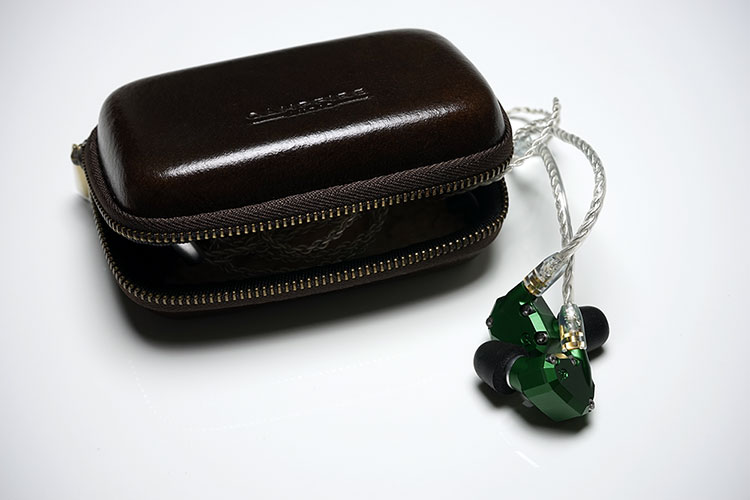Sound Impressions
Summary
The Andromeda probably has one of the best tonal frequency responses I have heard in a long while for a 5 BA driver setup or any setup for that matter outside of the big hitters from 64Audio and Vision Ears. It is incredibly more expansive in many respects compared to Jupiter, with only a purposeful coloration where it matters and showing off excellent clarity and detail.
I would not though term the tonal balance as neutral, lean, or thin. In fact, it has a decent amount of body to it which makes the level of clarity all the more impressive. The Andromeda has a very high level of musicality combined with a high degree of technical capability right across the board.
The Andromeda is essentially tuned with a solid and weighted low-end response that cascades downwards from the get-go and with some elements of peaking around the 2-4k for vocal presence focus and a nicely plateaued peak around the 7-10k marker to allow the treble to shine without any sudden and sharp peaking.
It is a very organic natural sound overall with a slightly u-shaped response which is going to appeal to a lot of casual and audiophile listeners alike.
I always loved the energy Jupiter gave me, especially in the mids and treble performance, but the Andromeda is just that bit more resolving in comparison with superior staging, dynamics, and instrumental separation.
Be warned, it is highly sensitive, can throw out a bit of noise on less efficient amps and tonal balance can change depending on the output source you connect it to. I have grown used to the CA lineup being very efficient, the Andromeda just might be the most efficient of the lot.
Bass
I love how CA tuned the Andromeda bass. Thick, weighted, and more forward sounding but resisting any temptation to overcook the mid-bass and instead it keeps everything controlled and deep.
Sub-bass reach and presence are excellent for a BA with a greater emphasis on the 30-60Hz marker before it starts dropping down towards the upper bass to the lower midrange transition.
Nothing bleeds or sounds bloated, definition and articulation are excellent also and unlike most BA designs the low end of the Andromeda sounds very spacious indeed. It is the kind of snappy solid bass that works very well with arena rock for me, adding excellent depth and body with double kick drums.
Mids
Spacious, smooth, and with plenty of detail. Avoiding that mid-bass or upper bass hump really allows the Andromeda mids to shine with a very natural sounding instrumental separation and timbre. Vocal presence is elevated around the 2-4k range bringing a welcome focus on vocal performance without losing everything else behind them.
Both male and female vocals sound life-like, never overly rounded or lacking in detail. It can be a little source-dependent, some will give the midrange a little bit more neutrality such as the AK240, and others, such as the Shanling M5 will produce a warmer sound.
In both cases, though sibilance was kept to a minimum and detail still shone through. I would caution on using the Andromeda if you are hugely into shredding solos, though, it doesn’t have the searing neutrality or a sharp enough attack to keep pace. For that, I still think custom units such as the VE6XC and the Roxanne have the edge.
Treble
CA has been clever with the treble tuning and certainly, the resonating chamber design makes its mark by offering excellent extension and clarity combined with an FR curve that, whilst elevated, is not peaky.
Forwardness is apparent around 7-10k but it is not straight up and down tuning thank god, there is a mild plateau that keeps sharpness satisfyingly in check. So whilst you get the impression of the Andromeda being revealing and lively with little in the way of roll-off you just wouldn’t term it as being inherently bright or too strident.
Synergy
Efficiency
The Andromeda is efficient, to put it mildly. Rated at 12.5 ohms and 115dB means it will run on just about any half-assed amp and will still have the propensity to sound pretty well driven.
I wouldn’t classify it as a hugely forgiving IEM though and there are some marked variations in its tonal balance based on what exactly you match it with. Output impedance matching is a factor in Andromeda’s performance.
Noise
Quite apart from that noise will also play a role in matching, though those using a Jupiter or one of the other CA IEMs and wishing to upgrade will not be terribly surprised by that statement. I have regularly referred to Jupiter in efficiency and noise testing simply because it is one of the most revealing units in my collection and the Andromeda probably even more so.
Noise is amplified from the usual source suspects such as the Shozy Alien, the Sony ZX1, and ZX2, Cayin N5 balanced out. Also from the well-worn lineup from traditional amping setups such as the Cypher Labs Theorem 720.
Other Audible Matching Quirks
To be frank, those names shouldn’t evoke too much of raised eyebrow, however, previously and relatively quieter amp stages on other IEMs did throw up a little too much noise and mechanical quirks for my liking.
Amps such as the Mass Kobo 395 (lots of hiss) and ALO Audio’s CDM on low gain (minor hiss), Shanling’s Flagship M5 DAP (hiss), the latest iPod Touch 6th Gen (crackles during track selection), and even Cypher Labs efficient IEM portable analog amp pot noise and power up pops were quite audible.
Better behaved sources included the X7 and X5ii from FiiO, the Lotoo Paw Gold, the Opus#1 from The Bit, and on the amping side the iBasso P5 (without the power pack), Stoner Acoustics Ruby, Mojo, and the RX from ALO Audio.
Default DAP Volume
Note that in some cases the default starting volume for quite a lot of the DAPs was simply too high. For example, the X7 was about 8 steps below stock volume settings and the X5ii at just 22 digital steps so do as an advisory I would drop the volume before starting any audio playback on DAPs just to be on the safe side.
Tonal Matching
The core tonality described is really a best-case scenario, a sum of the averages so to speak. In truth, the Andromeda shifts its tonal balance somewhat depending on the output source or amp being matched to it.
FiiO X5ii & Sony ZX2
For example, paired with the FiiO X5ii you get a balanced clear sound with a greater emphasis on a snappy tight bass performance than sheer quantity.
By contrast, the slightly noisier Sony ZX2, (without ClearAudio+ but including DSEE HX and Dynamic Normalizer), sounds a touch more neutral, slightly darker, and less forward sounding than the X5ii especially in the mids.
You can of course switch on ClearAudio+ but that just brings everything was too forward particularly at the low end; great for bass heads and EDM does get some additional bass heft but it lacks a bit of coherence on everything else for me personally.
FiiO X7 & Shanling M5
FiiO’s X7 exhibited excellent noise control on the AM1,2 and 5 modules but combined with the X7 the Andromeda didn’t wow me on any of the modules.
Don’t get me wrong, they sounded good, technically excellent actually but it was missing a touch of sparkle particularly with vocals which I found sounded much better on the Shanling M5 even if it was the noisier and brighter of the two DAPs.
My advice with the X7 is to keep the more neutral and efficient IEM module locked on or at the very most the AM2 module. The AM5 module does it no favors with its very high output power.
Accidental Hero – Kojo KM-01
Quite by accident, I stumbled upon an incredibly bewitching stacked pairing of the Kojo KM-01 brass analog amp and the Andromeda. It smooths out a lot of the rough edges on the treble performance of the M5, adds some tasty richness into the low end, and keeps the vocals very much ‘on song’ with DAPs such as the Paw Gold.
The Kojo KM01 also eliminates the M5 and Cayin N5 noise with a black background and sounds absolutely wondrous with strong female vocal performances.
Anggun’s “Want You To Want” is an amazingly rich and powerful contralto pitched vocal and a background piano. It needs a setup with plenty of control and space for it to sound at its best as well as an accurate timbre for the dominant piano background track.
The Andromeda/Kojo combo nails it and then some, sounding spacious, full-bodied, and attention-grabbing. It is just a pity there were only 300 of this little brass portable amp wonders made and it does weigh a proverbial ton for its size.
Select Comparisons
Campfire Audio Jupiter
Of the two the Andromeda is also marginally the easier to drive with perhaps a 1-2 step difference using the Paw Gold. There is though a qualitative tonal difference between these two particularly in body, depth of bass response, and vocal/mids performance.
The Andromeda has the weightier, meatier sound with a full-bodied sub-bass performance that is lacking in Jupiter. Jupiter’s bass is good, decent presence and a hint of warmth, but it doesn’t have the same impact as the Andromeda. Vocals on the Andromeda are more forward than the Jupiter though both have a nice natural feel about them.
Jupiter also lacks the spaciousness and dynamics of Andromeda. Tonally it’s on the same wavelength but just does not have that same engagement and clarity that Andromeda is capable of.
Shure SE846
I always thought of the SE846 as one of the most sensitive IEMs out there until CA released their BA IEM range. The Andromeda really is way more sensitive than the SE846 with quite a substantial difference in gain and volume settings on just about every source I used.
For example, on the Paw Gold, the SE846 sits around 45-50 steps whereas the Andromeda is quite happy at 10-12 steps lower (35-40).
Tonally the Andromeda is more spacious and airy sounding than the SE846 with better treble extension and a more expansive and vibrant midrange.
Bass performance on both is thick and weighted but the focus of the Andromeda is slightly lower on sub to mid than the SE846 which is a bit more mid-bass focused. Personally, I find the Andromeda more cohesive and 3-dimensional sounding than the SE846 flatter tonal presentation.
IE800
The IE800 single dynamic flagship IEM can never be considered a bastion of comfort and isolation unless you do some serious tip swapping. Compared to Andromeda it falls way behind on these two aspects and is also considerably harder to drive effectively.
Tonally the IE800’s dynamic driver is competitive in terms of delivering an excellent, if slightly over-emphasized bass, excellent levels of clarity, and good treble extension.
However, the midrange lacks the same richness and natural flow of the Andromeda, and whilst the treble does extend ever so well it is a lot more brittle and spiky sounding than Andromeda’s smoother response.
At times the IE800 has the chops; classical, some aspects of EDM it really excels in but for pop, rock, jazz, and soul the Andromeda takes some beating.
JH Harvey Roxanne
Double the driver count, 12 versus 5 but relatively similar pricing for the universal. In theory, that should give Roxanne a technical advantage with double driver counts across the lows, mids, and highs.
It also makes it a big beast and comfort and fitting-wise a definite try before you buy. There is a gap also in sensitivity with the Andromeda requiring about 3-5 steps less on the Paw Gold volume setting.
For all that additional driver count the Roxanne sounded surprisingly muted compared to the Andromeda. Top-end sparkle was lacking compared to the Andromeda using the Paw Gold as the main DAP and source and keeping the bass tuning to a minimum.
The Roxanne also sounded less spacious than the Andromeda and lacking in a bit of quality extension at both ends comparatively speaking. The resolution and detail are great on the Roxanne by the way but it just doesn’t have the same level of brilliance as the Andromeda which I think makes all the difference.
Our Verdict
There are IEMs and customs in particular that are throwing out 8 drivers at $800 and 10 drivers for not much more than a grand. You would think a 5 driver BA design shouldn’t outperform any of them and therefore the $1k isn’t justified.
You would be dead wrong on that account unless you have some perverse taste in uber treble-thin performances in a phone box type of environment. The CA Andromeda punches way above its numbers in terms of delivery and tonal excellence.
This is a musically driven u-shaped response. Do not expect it to be a neutral color-free experience, but it’s fantastically fun to listen to and the details are all there in a very spacious setting.
It is also dead easy to drive and though its tonal balance shifts a little depending on what you match it with I found it overall to be a very flexible IEM that just simply sucks you right in and performs regardless.
I am also glad to see CA come out and say that the Andromeda is THE flagship and there will not be anything higher than it for a while, if at all. The cable issue also seems to be very much settled and with the inclusion of the Nova I think Campfire Audio has an incredibly competitive lineup of IEMs right now on the market.
Campfire Audio Andromeda Specifications
- Frequency Range: 10Hz – 28kHz
- Sensitivity: 115dB SPL/MW
- Impedance: 12.8 ohms @ 1kHZ
- Cable: Silver Litz cable, MMCX connection




